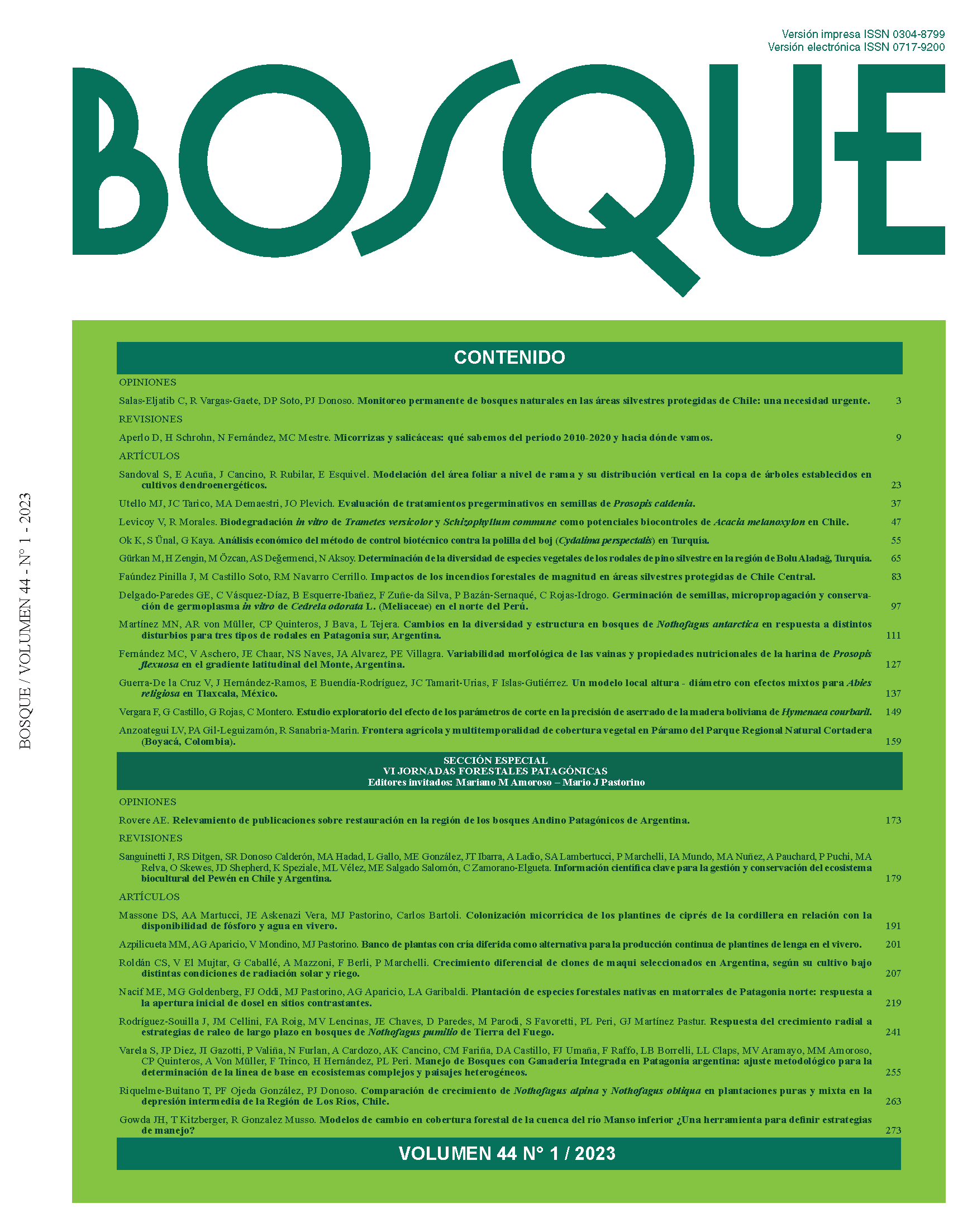Main Article Content
May 22, 2023
Abstract
The box tree moth poses a threat to the Anatolian boxwood (Buxus sempervirens) which has significant economic and ecological value in Türkiye. This study aimed to determine the economic feasibility of pest control with solar-powered light-pheromone (SPLP) traps against the box tree moth in the Ağva Forest District of Şile Forest Enterprise, which is the only region in Türkiye with a management plan for boxwood shoot utilization. For the economic feasibility analysis, approaches including net present value, benefit-cost ratio, and the comparison of discounted finite cost of control with the capital value of infinite revenues were used. Considering the revenues of the Şile Forest Enterprise from the sale of the boxwood shoots in a finite period, it was found that pest control with the SPLP traps is not economical, producing a benefit-cost ratio of 0.371 with a net present value of -229,647.10 TL. In addition to the revenue of the enterprise, after taking into account regional income losses, water production value, and the benefits of other non-market ecosystem services provided by boxwood areas, the benefit-cost ratio increased to 2.688, and pest control became economically feasible. It was determined that the capital value of the infinite annual revenues from boxwood shoots was greater than the present value of the pest control costs against the box tree moth in a period.
Downloads

This work is licensed under a Creative Commons Attribution-NonCommercial 4.0 International License.


